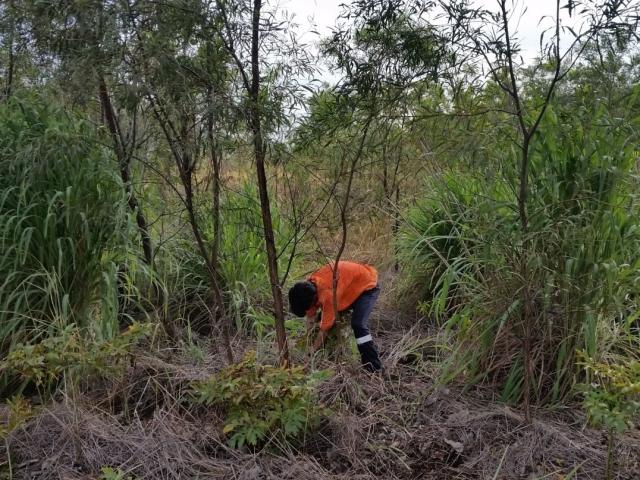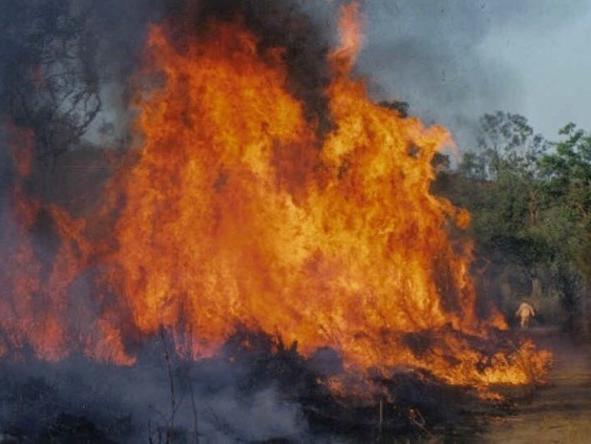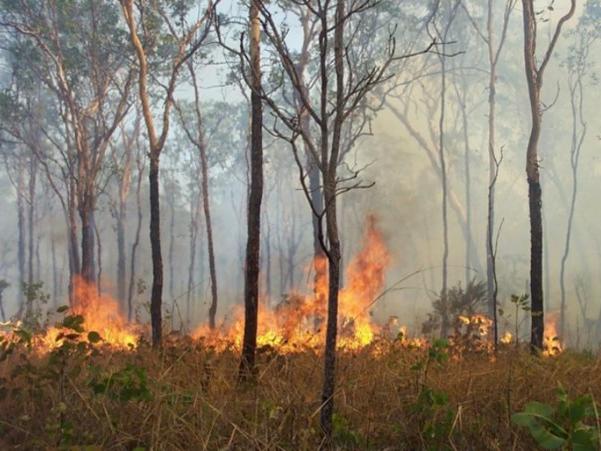Why we must act on Gamba Grass now

Fifteen years ago, Gamba Grass was a forage species with vast potential in the pastoral industry and was promoted and planted in the Northern Territory (NT) in the 1980s and 1990s.
However, spread has resulted in uncontrollable infestations which are the focus of hundreds of thousands of dollars of research funds and control efforts annually, not to mention the impacts to wildlife, agriculture, tourism, and fire-fighting resources.
A Gamba Grass Field Day was held at El Questro Station in the Kimberley last month to share learnings from more than ten years researching Gamba Grass in the Northern Territory.
Research has recorded Gamba Grass fuel loadings of up to 30t/ha, compared with native pasture fuel loadings of approximately 6t/ha. This significant fuel loading intensifies fire heat, increases flame height, and expedites movement of fires.
Gamba Grass-fuelled fires can be up to 24 times the magnitude of equivalent fires in non-invaded native pasture and savannah. The rapid spread of Gamba Grass and the intensity of Gamba-fuelled fires exacerbates the threat to bushland, farmland, horticulture, public recreational spaces and homes.

Participants at the field day learnt the financial impacts of Gamba Grass infestation go far beyond the direct damage to land and infrastructure. Stand-by costs for NT fire-fighters on declared total fire ban days (declared as a consequence of Gamba Grass fire threat), for example, have increased from $200/day in 2013 to $11 000/day in 2017.
Gamba Grass Management and Eradication zones in the NT consume significant public resources for the monitoring and legislative compliance involved with maintaining fire-breaks around property, infrastruture, and internal roads.
The messages from the NT research and management experience provides a valuable reminder to ensure that this weed is not able to spread and take over the Kimberley landscape.
The infestation at El Questro Station has been managed annually since 2006. Rangelands NRM, Department of Fire and Emergency Services, El Questro Station, Department of Primary Industries and Regional Development, Kimberley Rangelands Biosecurity Association and Department of Biodiversity, Conservations and Attractions have all contributed funds, personnel, expertise and equipment in a collaborative effort which has reduced the infestation area from the 1770ha planted in 1991 to less than 440ha in 2018.
A targeted eradication program is effectively reducing the known Gamba Grass area, with routine surveying efforts identifying and managing any new areas of infestation.
Combinations of aerial and foot surveys throughout El Questro station are used to map, treat and monitor Gamba Grass habitat during March through until June annually.
Gamba Grass is identified by its wide leaves, hairy leaf and stem surfaces and prominent white mid leaf vein. Seed can be spread by animals, human activity, water and wind. One plant can produce 70 000 seeds.
Your help is needed in identifying and reporting any plants to DPIRD.
If you suspect Gamba Grass on your property or elsewhere, you can contact Peter Robson, Biosecurity Officer on 91664047 or 0438 966 219.
Reports can also be lodged with the MyWeedWatcher app, or with the Pest and Disease Information Services.
For more information on Gamba Grass, please contact Kay Bailey, Manager – Invasive Species Priority Weed Response, Kununurra, on 9166 4017 or 0455 901 995.

